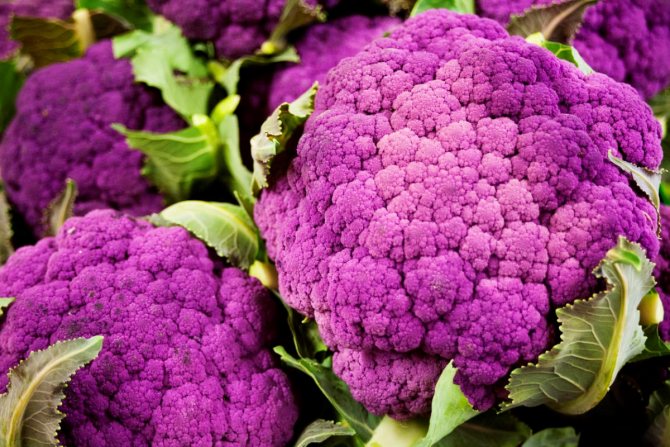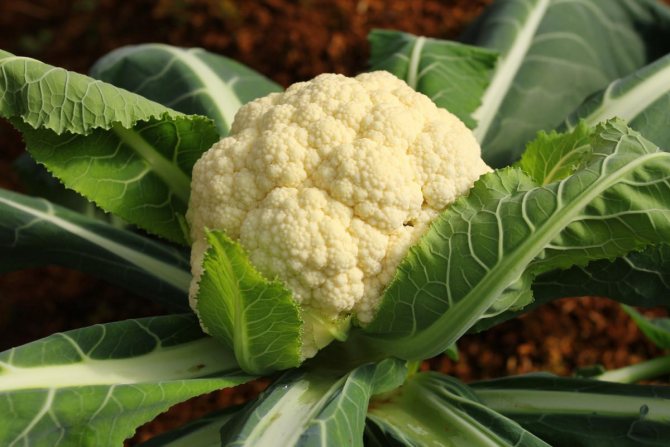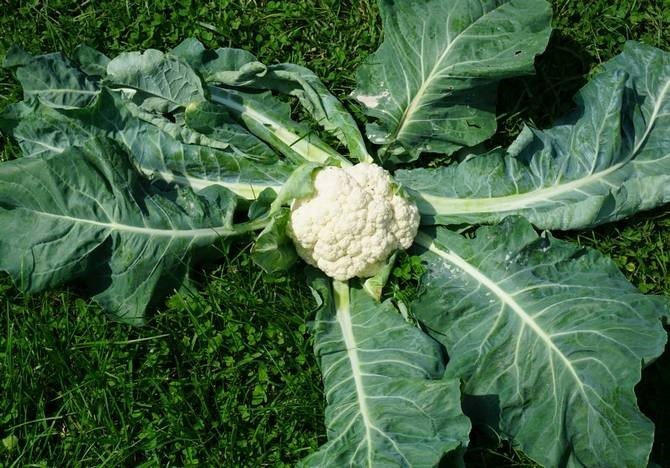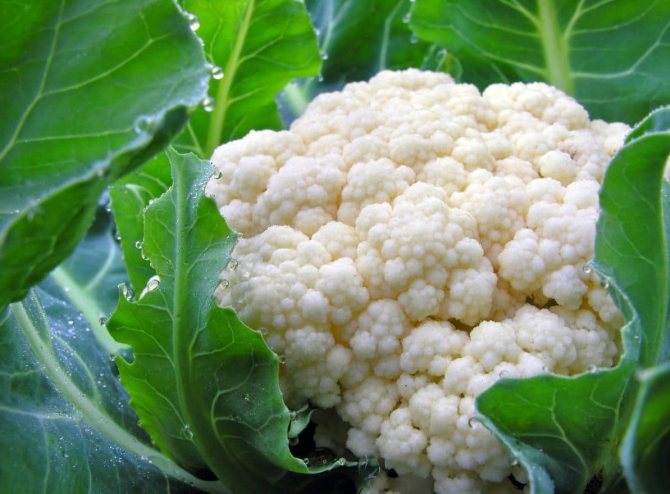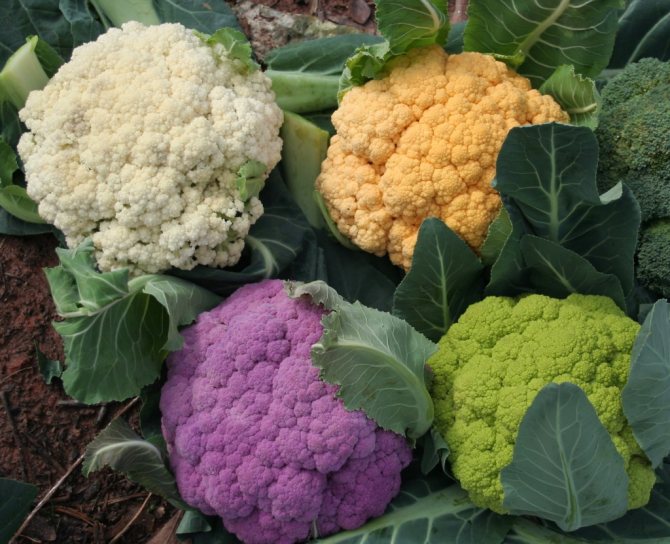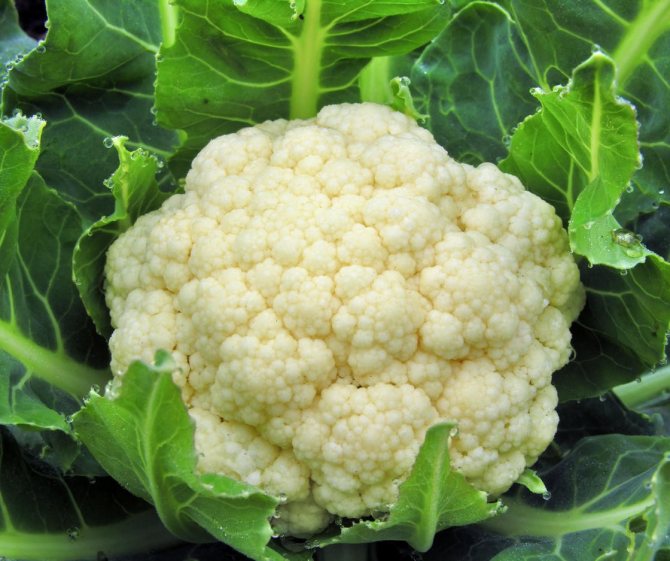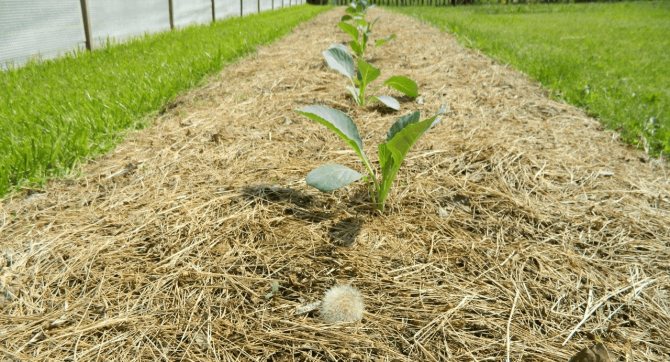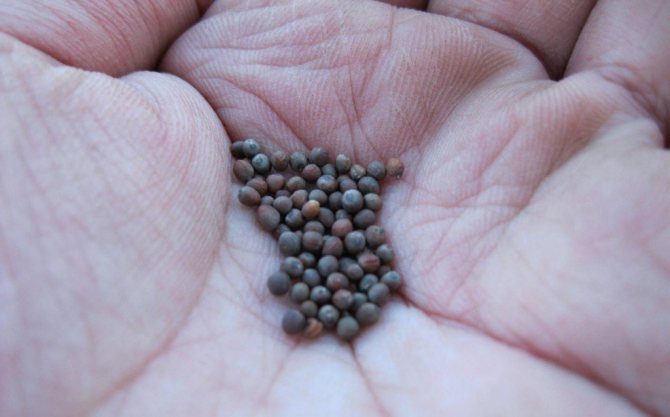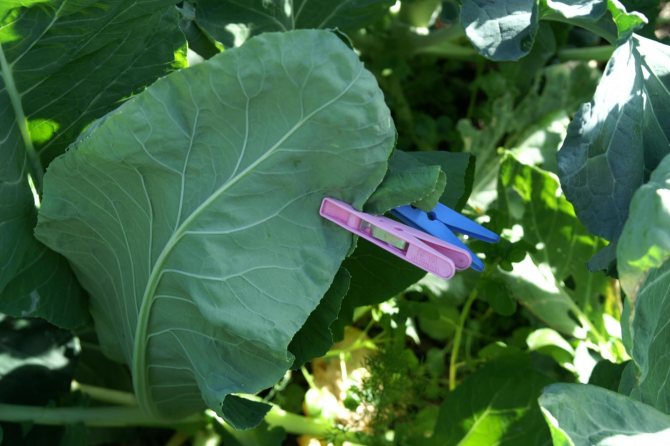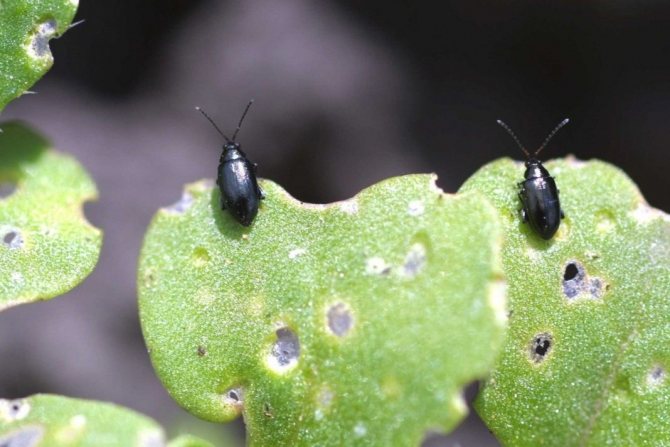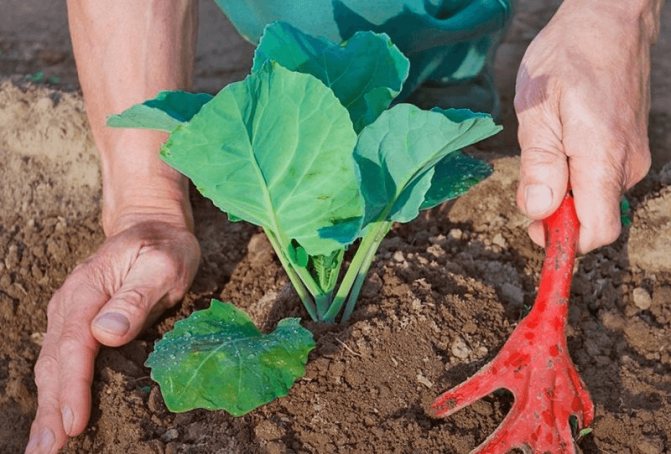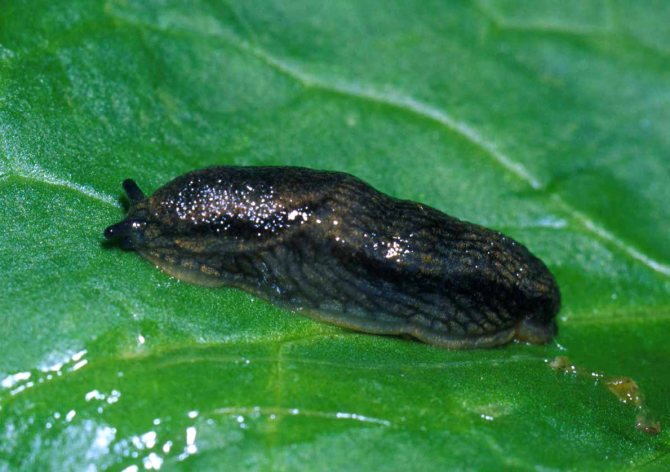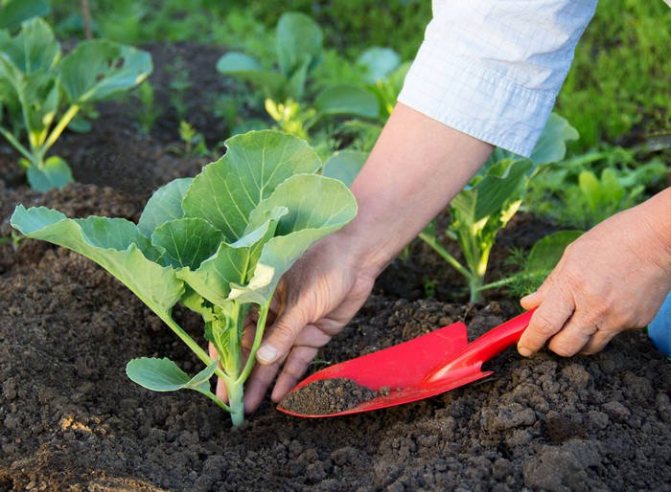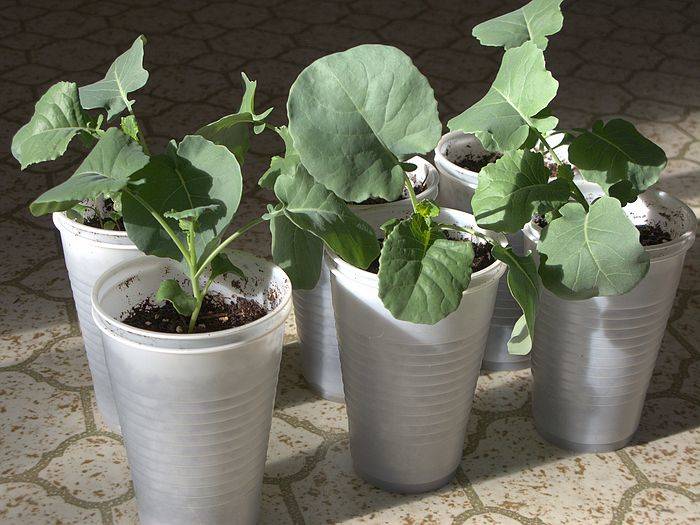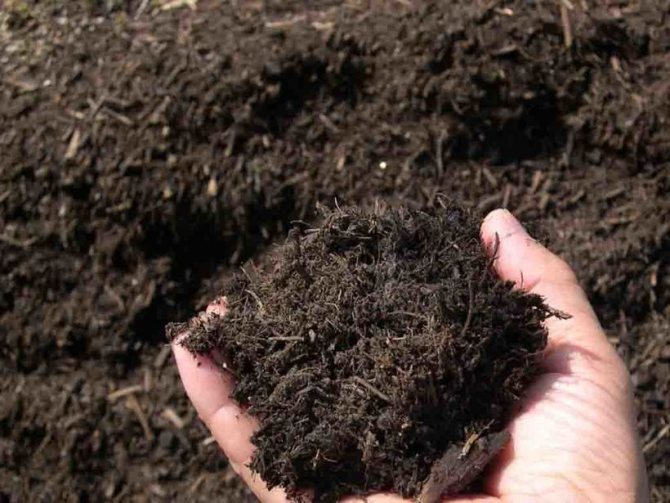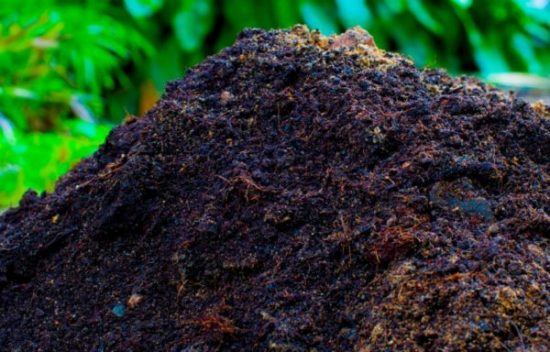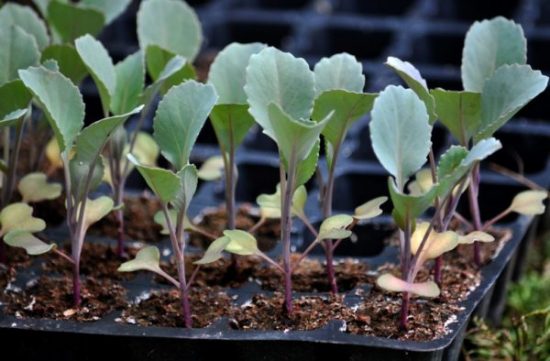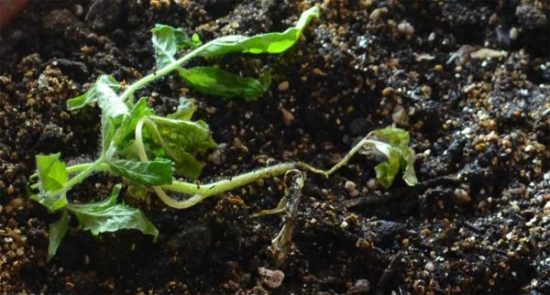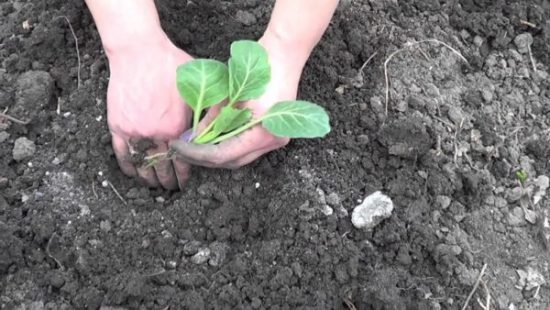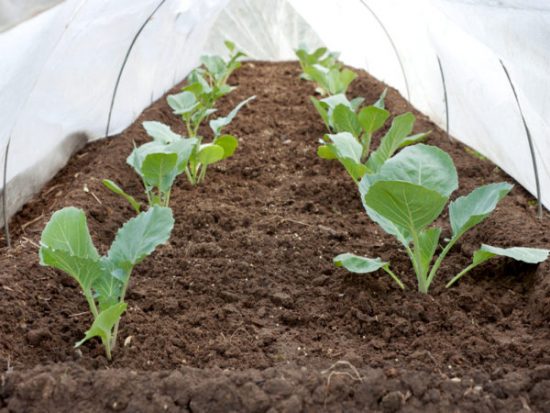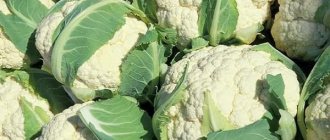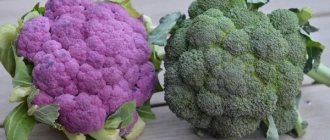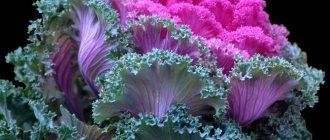Cauliflower is a valuable agricultural crop long known for its nutritional and medicinal properties.
Many domestic gardeners have mastered the cultivation of cabbage in greenhouses or on personal plots.
Growing cauliflower outdoors is a feasible procedure, which, however, has its own characteristics and secrets. This is what today's article is about.
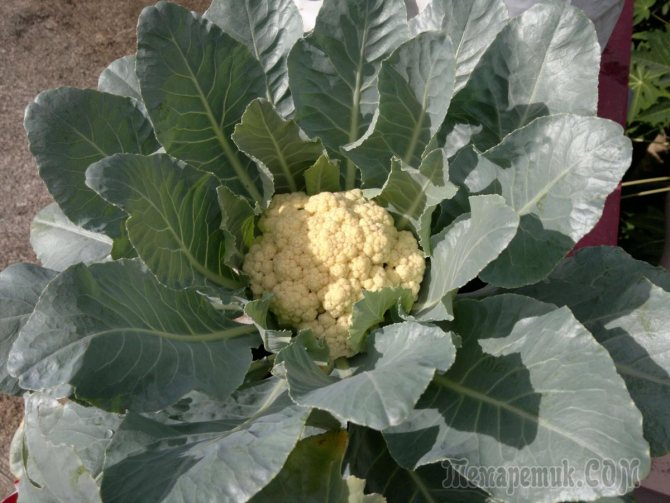
General description and stages of development
Cauliflower is an annual plant that can be sown in spring (spring version) and early autumn (winter version). In one year, not only the head is formed, but also the fruits with seeds. The root system of cauliflower is not well developed, fibrous type, located near the soil surface. Harvesting of cabbage is already possible 90–170 days after sprouting, seed material ripens in 200–240 days.
The stem has a cylindrical shape, its average height is 0.15–0.7 cm, it all depends on the characteristics of the variety. Leaf plates can grow horizontally, straight, or obliquely upward. They are often spirally curved. The color of the leaves is different, from light green to blue-green, a waxy bloom is also present. Their length varies between 15–90 cm. Narrow plates are oval, ovoid or elliptical.
There are varieties of cauliflower that consist of individual flowering shoots. In other varieties, the head is formed by twisting the apical shoots, which are highly branched and contain the rudiments of inflorescences. At the stage of formation of 9–12 leaves, the process of tying the head begins. Its shape can be round or flat-round. There are types of cauliflower not only with a white head color, but also green, yellow, purple. There are also copies with different shades.
At the stage of full maturation, cauliflower buds, flowers and seeds with seeds appear. They are formed in several shoots, in their peripheral part. Small flowers are painted white or yellow. The seeds retain their germination capacity for three years.
Important! The storage period for cauliflower is 7-10 days, but only at temperatures of 0 ° C.
Depending on the variety, there are specimens that bloom in the second year, and there are varieties in the first year of life. According to the ripening period, 3 groups of cauliflower are distinguished: early (90–110 days), medium (110–135 days) and late (160–170 days). According to this characteristic, the appropriate time for harvesting cabbage is also determined: the first days of June, the last days of July and the end of August.
Features and characteristics of culture
Cauliflower is considered a cold-resistant vegetable. She is one year old. It is grown because of the head formed by shortened flowering stems. Its tissues contain fiber, so the vegetable is beneficial for those suffering from digestive problems.
The pulp contains:
- dry matter - 10.5%;
- carbohydrates - 5.4%;
- proteins - 2.6%;
- vitamins;
- minerals (potassium, calcium, iron, magnesium).
A plant grown from seed has a taproot type. When growing cauliflower through seedlings, a fibrous root system is formed. The culture has a herbaceous stem that coarsens towards the end of the growing season.The level of cold resistance is determined by the variety. Early ripening varieties during the formation of inflorescences do not withstand frosts down to -3 ° C, later species are more cold-resistant. They can withstand cold snaps down to -5 ° C.
The best varieties of cauliflower
To obtain a rich harvest, it is necessary not only to adhere to certain rules of agricultural technology, but also to know which varieties of cauliflower are better to choose for growing on unprotected soil, and which ones for greenhouse conditions.
For open ground
The following varieties of cauliflower show good results when cultivated in open areas:
- Movir 74. The plant is of early ripening period, it has high consumer qualities. He has resistance to high temperatures and cold snaps. The fruit is almost 23 cm in diameter and weighs 1.4 kg. The variety gratefully responds to frequent but moderate watering.
- Alpha. This hybrid form of early ripening pleases with the harvest in 60 days. The head has a white color, smooth surface and dense structure.
- Consist. Agriculture tolerates small drops in temperature quite painlessly. Heads of cabbage are harvested after 75–90 days. Their mass is about 800 g.
- Autumn giant. The plant belongs to the category of late-ripening, the duration of the growing season is 220 days. A ripe cauliflower head weighs almost 2.5 kg.
- Yako. This type of cauliflower is suitable for both summer and winter cultivation. It has high productivity rates. Harvested after 65 days. Head mass 820-850 g.


For greenhouse
For the successful cultivation of cauliflower in polycarbonate greenhouses, the following varieties should be preferred:
- Guarantee. The culture ripens within 100 days from the moment of planting in the ground. The head is up to 39 cm in diameter. It is painted either white or cream. The variety is not prone to cracking. Head mass 900 g.
- Goat-Dereza. The plant has compact leaves directed upwards. Mass of a dense head up to 800 g. Yield indicators from 1 sq. M. m. are almost 3 kg. Cauliflower has a universal purpose, it is grown both in summer and spring.
- Blizzard F Hybrid plant stands out for its resistance to adverse environmental factors. The rounded head has a white color and a dense structure. The mass of a ripe head of cabbage is up to 900 g.
- Patriotic. The mass of a dense and white head is about 700 g. The variety is appreciated for its excellent taste and market characteristics.
- Early Gribovskaya 1355. The early ripening variety gained its popularity due to its high consumer qualities and relative unpretentiousness in care. From the moment the sprouts appear and until the head is fully ripe, 80-101 days pass. Cabbage weight up to 900 g. The variety resists cracking.
See also Top dressing of cabbage and its treatment of pests with ammonia
Requirements for growing conditions
Temperature
Cauliflower is more thermophilic than other representatives of this species.
- Seeds germinate at a temperature of 5-6 ° C
- The optimum temperature for their germination is 20 ° C; in this weather, cabbage rises in 3-4 days.
- At a temperature of 6-10 ° C, seedlings appear in 10-12 days.
- If the temperature is below 5 ° C, the seeds do not germinate, but they do not die either; when it gets warmer, shoots will appear.
If, during the seedling period, cabbage falls under a prolonged (more than 10 days) cold snap (4-5 ° C), then it forms a loose head, which crumbles within a week. The same will happen if during the same period there are very warm nights (18-20 ° C).
The optimum temperature for growing cauliflower is 17-20 ° C. At temperatures above 25 ° C, the growth of the culture slows down, it does not give heads for a long time, and they themselves turn out to be small and loose. |
Cauliflower at an early age does not tolerate night frosts.In an adult state, it is more stable and can tolerate short-term frosts down to -2 ° C, and later varieties up to -4 ° C.
Shine
Culture does not tolerate the slightest shade. In the shade, it does not form not only inflorescences, but does not even build up a full-fledged rosette of leaves. On demand for light, it is superior to white cabbage.
They plant her in the brightest place. Sometimes the plants are covered with lutrasil to protect them from cabbage whites. In this case, the heads are formed later, but they are denser.
Humidity
Cauliflower is very moisture sensitive. When grown through seedlings, the culture does not tolerate the slightest drying out of the soil; with direct sowing into the ground, it is more resistant to a lack of moisture. If the soil is allowed to dry out during the seedling period, then the cabbage will form small, loose, quickly crumbling inflorescences.
If insufficient watering is combined with high air temperatures (above 25 ° C), then the culture will not form a head. However, it does not tolerate flooding either.
The soil
Cauliflower is very demanding on soil fertility, the quality of the crop depends on it.
On acidic soils, plants do not develop, look depressed, wither and die without forming a full-fledged outlet. |
On soils with a high humus content, large dense heads weighing 1.5-1.7 kg grow. Cabbage grows poorly on cold clay soils. Most of all, light and medium loams with a pH of 6.5-7.5 are suitable for it.
Varieties
There are early, medium and late varieties.
Early varieties the head is formed in 75-100 days. These include:
- Françoise - round head, white, weight 0.4-1.0 kg. Disease resistance is good
- Princess - white head, average weight 1.1 -1.9 kg.
- Snezhana - the mass of the head reaches 1.8-2 kg, the shape is flat-round, white
- Early Gribovskaya - round-flat head, large, white. Head weight 0.2–1.0 kg.
- Dereza goat - heads are formed of small size, spherical in shape. The mass does not exceed 1 kilogram.
Although the Express MC variety is presented as an early variety, its ripening period is 105-110 days and early production should not be expected from it.
Mid-season - ripening period 100-120 days.
- Undine - medium-sized head, round-flat, medium tuberous, whitish. Head weight 0.6 kg.
- Snowdrift - compact white heads with good density. Their weight varies from 0.5 to 1.2 kg.
- Purple ball - forms a rounded purple head. The mass of one head of cabbage reaches 1-1.5 kilograms.
Late varieties form a head 140-150 days after full germination. They are cultivated in the south. It makes no sense to grow them in the center and in the north. Varieties:
- Shalasi - the head is round, partially covered, finely tuberous, dense, whitish. Head weight 0.7 kg.
- Universal - the head is small, round-flat, uncovered, medium-tuberous, green. Head weight 0.4 kg.
- Pearl - the head weighs about 800 g, lumpy, greenish shade, pistachio.
Hybrids are also divided into early, medium and late, they have the same ripening period.
Better to grow hybrids. They are more resistant to heat and short-term drought, form larger inflorescences than varieties and their yield is higher.
Only early varieties and hybrids are suitable for the northern regions. Cabbage with a ripening period of more than 100 days will not have time to tie a head. Early and middle varieties of cauliflower are cultivated in the middle lane. Growing of late varieties is also permissible, but only if there is a warm greenhouse for early sowing of seeds for seedlings.
Soil preparation
Under the cauliflower in the fall, organic matter must be introduced: manure, compost, plant or food residues (potato peelings, apple and pear carrion, cut grass, etc.).
If it is not applied on such soils, then planting the culture must be abandoned, since it will not develop a rosette, not to mention the inflorescences.In this case, mineral fertilizers will not replace organic matter.
Manure is brought in for digging, you can even fresh mullein or horse. Over the winter, it will change somewhat and the culture will be quite comfortable. For 1 m2, 1 bucket of fresh or 3 buckets of rotted manure or compost is introduced, embedding it on a shovel bayonet. Simultaneously with organic matter, you can add superphosphate 2 tbsp. l / m2.
Organic matter is desirable even on chernozems, but on poor podzolic, peaty and sandy soils, you cannot do without it. |
On acidic soils, liming is mandatory, but lime cannot be applied simultaneously with manure. Therefore, it is brought in 1.5-2 months before organic matter, or in the spring directly into the hole.
In the spring, fresh and semi-rotted manure cannot be applied - the culture reacts poorly to it. If organic matter has not been introduced since the fall, then in the spring the soil is filled with compost or rapidly decaying food waste.
Sowing dates
In the southern regions, cabbage is sown for seedlings from mid-March.
- To obtain heads already at the end of June and beginning of July, early varieties are sown in containers in the second decade of March.
- You can sow seeds in the greenhouse at the end of March, and in open ground in mid-April.
- Mid-season varieties are sown in early April, and late varieties in two terms at the end of March and at the end of April, in the south they will have time to harvest.


In the center and in the north, early varieties are sown in a greenhouse in mid-April, medium ones in early May, late ones either at home in early April, or in a greenhouse in the middle of the month.
You can arrange a seedling conveyor, sowing seeds gradually after 10-14 days. Then the harvesting period will stretch from July to October.
Sowing cabbage for seedlings
In order for a vegetable crop to actively grow and develop, you need to know when to sow seeds in the soil and how to care for them.


Seed preparation
Preparatory activities begin in the last days of February. They provide for the processing of seed to improve the quality of its germination.
For these purposes, a method such as temperature stress is used, where the seed is kept for 15–20 minutes in a container with hot water (+50 ° C). After the time has elapsed, you need to remove the floating seeds, and determine the remaining ones at the bottom in a container with cold water for 2-3 minutes. Then they are transferred for 8-12 hours into a container with a solution of a growth stimulator, potassium permanganate. At the end of the preparatory procedures, the seeds should be rinsed under running water and dried.
Expert opinion
Stanislav Pavlovich
Gardener with 17 years of experience and our expert
Ask a Question
Advice! It is possible to increase the germination of the seed by stratification, keeping it on the lower shelf of the refrigerator for a day.
Selection of soil and capacity
Considering that the roots of the agro-plant are tender, it is better to plant seeds in the ground in separate pots. Peat tablets are also suitable. As a suitable substrate, either ready-made seedling soil or a homemade soil mixture consisting of:
- peat (2 parts);
- river sand (1 part);
- humus (1 part);
- rotted mullein (1 part).
Cauliflower soil should be both nutritious and loose. If the soil is acidic, then it is effective to use dolomite flour, lime, wood ash for neutralization.
Sowing terms and technology
Depending on the variety, sowing operations are carried out at different times. Choosing the timing of planting seeds in the soil, you need to take into account the climatic features of a particular region. The age of the seedlings at the time of disembarkation to a permanent place should be 25-30 days. This is especially important for the Moscow region, where conditions are not entirely suitable for this vegetable crop. Such regions are characterized by an abundance of cloudy days; it is worth growing varieties of an early or medium ripening period.
Sowing seeds for seedlings for early varieties should be done at the end of February.For mid-season specimens, it is recommended to plan work in mid-March. Late varieties are best sown in late March.
Seed sowing technology provides for the following actions:
- Disinfected fertile soil is poured into the prepared containers.
- Depressions are made no more than 1 cm.
- A cauliflower seed is placed in the center and sprinkled with a thin layer of sand. So it will be possible to protect the sprouts from the black leg - a dangerous disease.
- Moistened with a spray bottle.
- They create a greenhouse effect with a plastic bag and place in a warm place with diffused light.
Growing conditions and care of seedlings
In order to provide the seedlings with comfortable conditions for growing, it is necessary to maintain the air temperature in the room within the range of + 18… + 20 ° C. When shoots appear, it is reduced to avoid stretching to + 6 ... + 10 ° C. After 5 days, the temperature is raised to +15 ° C. The level of air humidity should be within 70-80%, irrigation activities are often carried out with warm water, but in a moderate amount.
Important! At room temperatures above 21 ° C, ovaries will not form on cabbage inflorescences.
Proper care of seedlings involves loosening the soil, irrigation, and the introduction of nutrients. In the phase of 2-3 true leaves, the feeding procedure is done using wood ash at the rate of 1 glass of the product per 10 liters of water. A mullein solution is also suitable, where organic fertilizer and water are taken in a ratio of 1:10.
Picking
Young plants are planted in separate pots, if they were in a common container, or in a heated greenhouse, at the age of 21 days. Before planting in an open area, the plants should stay in a spacious container for another month.
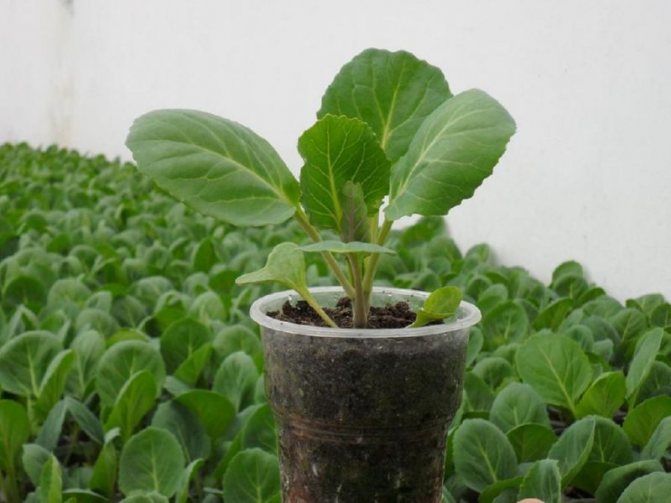

Growing and caring for seedlings
Cauliflower is more often grown in seedlings, but it is almost impossible to grow good seedlings at home due to poor lighting, dry air and too high temperatures. Domestic seedlings are frail, elongated and very often die when planted in the ground.
Therefore, it is better to grow cauliflower in seedlings in greenhouses. Before sowing, the soil is spilled with a hot solution of potassium permanganate to destroy the spores of rot and keel.
In the greenhouse in spring, the main problem is a sharp drop between day and night temperatures: during the day in the sun it can be up to 30 ° C, and at night only 5-8 ° C. Therefore, the emerging seedlings are mulched with hay, but the vents are left open. The mulched seedlings will not freeze.
Water regularly, but until 3-4 true leaves appear, the water should be slightly warm. To do this, it is left in buckets in the greenhouse. After the seedlings grow up, watering is carried out with ordinary water from a well.
If it is not possible to grow cabbage seedlings in a greenhouse, then you will have to do it at home. 1-2 seeds are planted in shallow bowls. When shoots appear, they are placed in the coldest and lightest place. At this time, it is undesirable for the seedlings to be in direct sunlight, since the delicate leaves get burned, and the plants die. Therefore, they are shaded with newspapers or white cloth. Water regularly when the soil is slightly dry.
When 2-3 true leaves appear, the seedlings dive into the greenhouse or into the ground under the shelter. |
If it is warm enough outside and at night not lower than 3 ° C, then in the greenhouse the plants can not be additionally insulated, in case of night frosts, the seedlings are mulched with hay. If the temperature is not high during the day, you can leave it.
Top dressing
Early and mid-season varieties are fed during the seedling period once 12-14 days after germination. Nitrogen fertilizers are introduced: urea, ammonium nitrate, ammonium sulfate.
Late varieties are fed 2 times. The first feeding is carried out 12-14 days after planting, applying nitrogen fertilizers or infusion of weeds. The second feeding is done 2 weeks after the first, an infusion of ash or micronutrient fertilizers containing nitrogen is added: Baby, Krepysh, Aquarin.
If the lower part of the stem becomes thinner - these are the first signs of a beginning "black leg", such plants are immediately thrown away, and the ground where they grew and the rest of the seedlings are immediately watered with a pink solution of potassium permanganate. |
2 weeks before planting, the seedlings are hardened, leaving one open, and then 2 vents in the greenhouse overnight. If the nights are warm (10 ° C and above), then the doors are also left open.
It is possible to plant cabbage of early and medium varieties in a permanent place 30-40 days after germination, when it has 4-5 true leaves, the late one is planted after 45-50 days.
It is impossible to keep the seedlings longer than the prescribed time, otherwise it does not take root well and ties up small loose heads.
Transplanting
Before planting, fertilizers are applied to the holes:
- ash 0.5 cups
- nitroammofosk 1 tsp;
Fertilizers must be mixed with the ground.
On acidic soils, additionally add calcium nitrate 1 tbsp. l. or an increased dose of ash (1 glass per well).
The wells are filled with water, and when it is absorbed by half, the seedlings are planted. |
The plants are dug out with a large clod of earth, trying not to damage the roots, planted in a new place so that the cotyledon leaves are in the ground, and the two lower ones lie on the ground. After planting, the plants are watered again.
If the seedlings have overgrown, then the lower pair of leaves is cut off and deepened to the next lower pair.
If the temperature at night is below 3 °, then the planted cabbage is covered with lutrasil, and if frost is expected, then it is additionally insulated with hay or a double layer of lutrasil.
It must be remembered that newly planted seedlings die at -1 ° C. |
The covering material is not removed until the frost ends, in the central regions this sometimes happens until June 10. Cauliflower is more thermophilic than other species, so it will not be hot under cover, it will grow better, and the covering material itself is an insurmountable obstacle for the cabbage whitewash.
When and how to transplant seedlings outdoors
Cauliflower quickly adapts to new conditions if you choose the right place and maintain the distance between the seedlings.
Choosing a place: we take into account the rules of crop rotation
In order for the seedlings to have enough lighting and nutrition, it is necessary to plant them in a sunny meadow, protected from drafts. The fertile composition of the soil should be at a depth of up to 40 cm. It is best to plant a vegetable crop on a garden bed, where cucumbers, legumes, onions, garlic, potatoes, siderates have grown before.
Preparation of ridges and layout
When forming a bed for this crop, it should be borne in mind that the distance between plants at an early ripening period should be 30 × 60 cm.And for late-ripening species, these parameters need to be increased by 10 cm. m of soil 1 bucket of humus and 1 tbsp. l. nitrophosphate.
Direct disembarkation
The step-by-step process of planting seedlings in an open area is as follows:
- In the prepared area, you need to make holes in accordance with the size of the plant root system.
- Add a handful of humus to each hole.
- Add wood ash (1 tablespoon per well) and mix with soil.
- Moisten the soil and plant a seedling.
- Mulch with humus, compost.
- If possible, darken young plants for 1-2 days.
Open field cultivation
In the country garden, a cauliflower bed is made in those places where certain vegetables grew. When planting in spring, good predecessors:
- onion;
- tomatoes;
- potatoes;
- cucumbers.
In summer, cauliflower is planted after lettuce, spinach, and other early greens. Crop rotation is the basis of agricultural technology. The harvest largely depends on it.
Preparing the soil
The soil is occupied immediately after harvesting the crop of the predecessor.Any organic fertilizer (peat, compost, humus) is applied for digging. Approximate consumption - 5 kg / m². Once every 7 years, the acidic soil is limed, gypsum is added to the alkaline soil.


For the autumn digging, mineral fertilizers are applied, which are necessary for the nutrition of cauliflower:
- superphosphate - 1 kg;
- potassium sulfate - 0.5 kg.
Fertilizer consumption is given for a 10 m² ridge. Nitrogen fertilizer (ammonium nitrate) is applied in the spring before planting cauliflower. Consumption - 0.5 kg per 10 m².
Sowing seeds and planting seedlings
Seeds are heat treated before sowing. They are poured into a tissue bag. First, it is immersed in hot water for 10 minutes, then in cold water for 1 minute. The seed is kept in the refrigerator for 10 hours.
Seeds are sown in a common container or in separate containers. Deepen by 0.5 cm. When 5-6 leaves appear, the seedlings of cauliflower are transplanted into the garden. They are covered from the sun for a week.
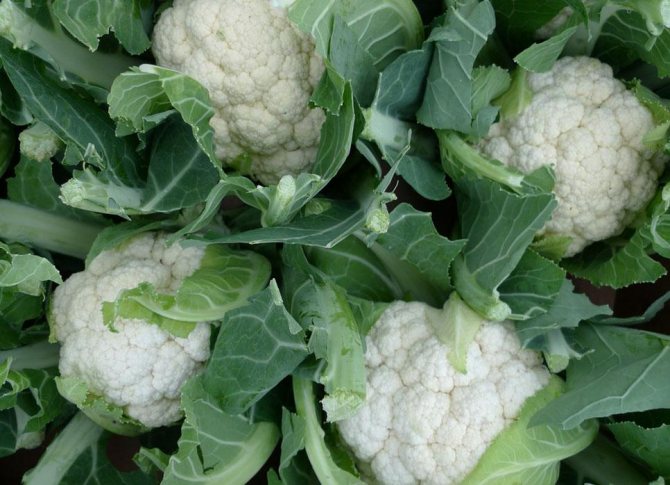

Irrigation and fertilization of cabbage bushes
The volume and frequency of irrigation is influenced by weather conditions, the amount of precipitation. At the beginning of the growing season, cauliflower needs less water than during the formation of inflorescences:
- the first half of the growing season - 30 l / m²;
- the second half of the growing season - 40 l / m².
Fertilizers are applied 2-3 times per season for cauliflower. The interval between them is 2-3 weeks. At the beginning of the growing season, nitrogen fertilizers are used (25 g / m²). In the period of inflorescence ripening, cabbage is fertilized with phosphorus-potassium fertilizers (30 g / m²).
When to huddle cauliflower
Those who grow cauliflower for the first time, the question arises whether it needs to be spud and when. They loosen the soil in the aisles and around the plants all summer long. Weeds are cut at the same time. Adhere to the following scheme:
- first loosening to a depth of 4 cm a week after transplanting seedlings;
- all subsequent ones - after watering to a depth of 10 cm.


Huddle the cauliflower once before closing the rows.
Care of unblown inflorescences
Cauliflower can be grown if its heads have not formed before the onset of frost. Take plants with a sufficient number of leaves (at least 14 pieces) and heads of at least 2 cm.
Plants are dug up with a clod of earth, transferred to the basement. They put them in a container, sprinkle them with earth. Nursing while growing:
- maintain soil and air moisture;
- remove dried leaves.
See also
How to deal with blackleg in cabbage and what to do for treatment
To read
| Air temperature | Growing time (days) |
| 13 ° C | 20 |
| 5 ° C | 50 |
| 1 ° C | 120 |
Features of seedless cauliflower cultivation
Not only the seedling method is used for the cultivation of agricultural plants, there is also a seedless way of cultivating them. To get the desired result, the main thing is to know its features.
In the open field
To grow a popular vegetable in the garden, you need to plant seeds in the soil as follows:
- Make grooves 1 cm deep at the designated landing site, maintaining a distance of 40 cm between them.
- Moisten the soil with warm water.
- Spread the seed treated with potassium permanganate solution, observing an interval of 5 cm.
- Sprinkle with soil and compact it carefully.
- Build a frame from arcs and stretch the film over the crops. This technique will help protect the cabbage from recurrent frost.
See also Cabbage leaves turn red and pink - what are the reasons and what to do
Alternatively, you can place the seeds in the holes. Each hole should not contain more than two or three seeds. When 3-4 true leaves are formed on the seedlings, you need to remove the weak ones and leave the strongest.
In the greenhouse
Cauliflower is also grown in greenhouses. The beds are also fertilized with organic matter and mineral components, neutralizing acidity if necessary and observing crop rotation. Sowing work is carried out after the snow melts, the temperature in the greenhouse should be from + 15 ... + 18 ° C.The depth of planting seeds in the ground is 5 mm; if you deeply deepen them, then the emergence of seedlings will occur much later.
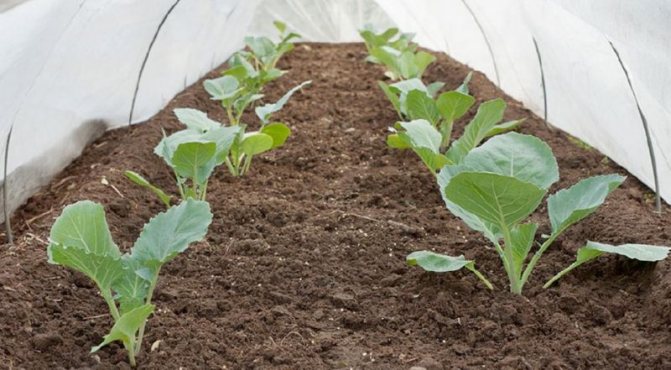

The soil should be mulched with dry sand, watering is carried out exclusively with warm water. The pick is done after 10 days. The scheme of planting cabbage seedlings in holes 70 × 30 cm. It is recommended to put a handful of wood ash, humus and nutrient complex composition of the Kemira type into each hole.
Harvesting
Readiness is determined by the condition of the heads and the recommendations on the packaging. Overgrowth should be avoided as they will begin to darken, loosen and bloom. The best time to cut is in the morning, before the dew dries, with the exception of days after night frosts.
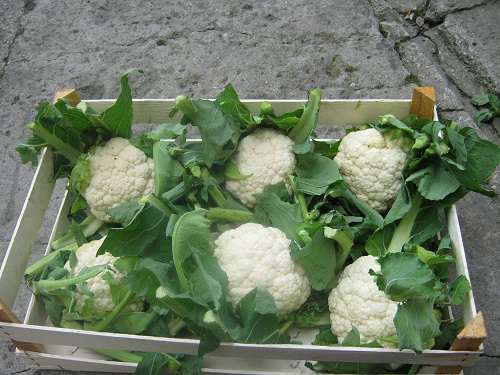

In order to preserve the crop much longer, it is dug up with roots and outer leaves, and then it is added dropwise in a box of sand in a cellar or other cool, but frost-free place.
Growing cauliflower outdoors is not difficult, but requires attention and strict adherence to the recommendations. And then the harvested harvest will diversify your table until the New Year!
Further care
Taking care of a vegetable crop is not difficult if you know agricultural techniques and do not make gross mistakes. Plants need irrigation, soil loosening, fertilizers.
Watering
You need to water the cabbage without undue zeal, per 1 sq. m of soil from 1 bucket of water. Waterlogging of the soil is unacceptable. Before rooting, the planted seedlings are irrigated every day, then it is enough to carry out the procedures 1-2 times a week. At the stage of ovary formation, the soil should not dry out, otherwise the yield indicators will decrease.
Expert opinion
Stanislav Pavlovich
Gardener with 17 years of experience and our expert
Ask a Question
In hot weather, it is good to spray on the leaf. To preserve moisture, the soil is mulched with rotted sawdust, cut grass, organic matter.
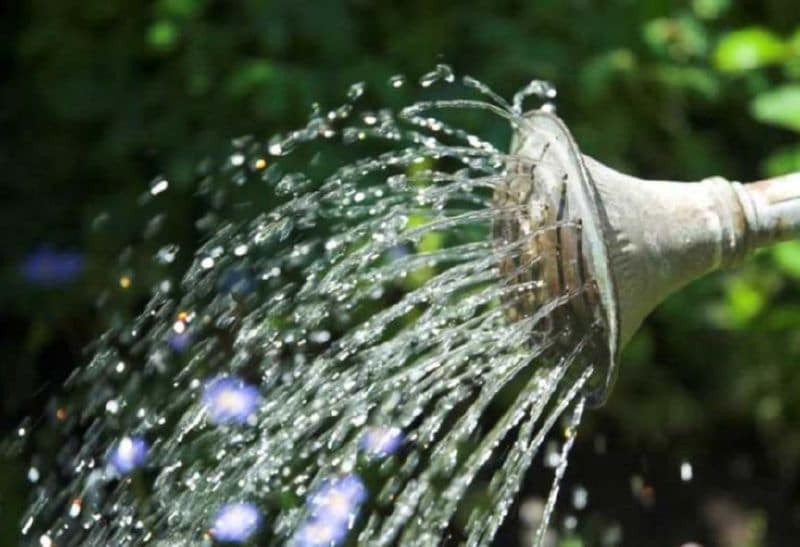

Shading heads from the sun
To exclude the flowering phase and prevent the head of cabbage from falling apart, it is shaded. This can be done by collecting the lower leaves of the cabbage in a bag. This technique is especially relevant for hot days, when there is a high probability of getting burns, damage to the head. It is better to untie the cabbage before harvesting or cold snap.
Fertilization
When growing crops in a garden bed, several feeding procedures need to be done for the entire growing season:
- The first is produced a couple of weeks after determining the cabbage seedlings to a permanent place, adding a mullein solution in a ratio of 1:10 with water. If there is a deficiency of boron and molybdenum, then the head of cabbage will be small, and the leaf plates will be narrow, inconspicuous.
- The second time fertilizers are used in a week, using mineral complexes. The procedure is repeated after 10-14 days.
Loosening and hilling
To prevent oxygen starvation of cabbage roots, it is necessary to regularly loosen the soil. Especially after heavy watering. And for the formation of additional roots, you need to spud the plants.


Head formation
The head formation process lasts only 15–20 days. At this stage, active leaf growth is observed. When the head of cabbage begins to sprout, they stop developing. It is believed that if you pick off the lower leaves of a cabbage, then the head gains mass more intensively. Here the decision is made on an individual basis.
Protection and prevention from diseases and pests
To scare away annoying slugs, caterpillars from the heads of cabbage, it is recommended to cultivate the land between the rows with dry mustard, lime, whole ash. Infusions based on the tops of tomatoes, weeds, garlic, pepper, chamomile work well against small aphids. Tobacco dust is suitable for getting rid of plants from cabbage flies, cruciferous fleas. In early spring, planting cabbage is effectively treated with antifungal agents.
What to consider before boarding
The quality and quantity of the crop depends on the correctly selected variety.When choosing, you need to evaluate early maturity. It depends on the ripening period whether the inflorescence will have time to form over the summer or not. Growing cauliflower as a white cabbage will not work. Culture has its own characteristics.
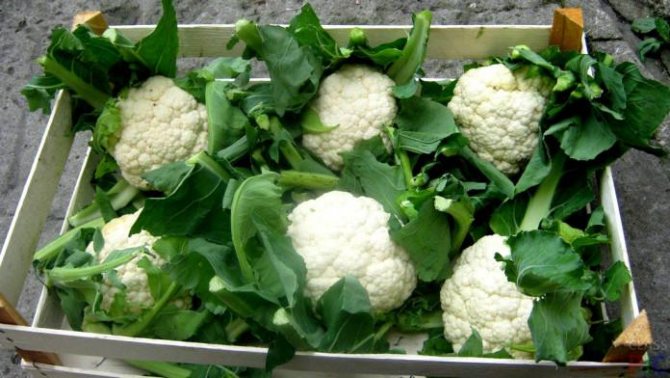

The size of the heads is influenced by:
- grade;
- landing time;
- agricultural technology;
- weather.
Determining the variety
In the spring in the Moscow region, summer residents plant ultra-ripe varieties of cauliflower. Get an early harvest. It is not stored for a long time. Early varieties of cauliflower are used to make vegetable stews, side dishes, salads. Grow:
- Snowball;
- Early ripening;
- Alpha;
- Movir.
Late varieties are the best for winter storage. The technical ripeness of the inflorescences occurs in late August and early September. The most productive is the Cortez F1 hybrid. He has a beautiful head of impressive size weighing 2-3 kg.


Optimal climatic conditions
In early summer, when the daylight hours are long, favorable conditions are created for the rapid formation of cauliflower inflorescences. If the weather is cloudy, the heads are tied better, they do not darken. The yield of a crop depends on the level of moisture not only in the soil, but also in the air. Optimal values:
- percentage of air humidity - 80-90%;
- the percentage of soil moisture is 75-80%.
See also
Description of the best varieties of cabbage for 2020 for different regions
To read
With a regular lack of moisture, the growth of the aerial part stops. The inflorescence appears early in cabbage. With waterlogging of the soil, vascular bacteriosis develops.
Temperature regime
The culture is classified as cold-resistant plants. Cauliflower grows best at 15-18 ° C. In hot weather, when the air warms up to 25 ° C and higher, the growth of the aerial part slows down. Inflorescences are formed small.


Temperature affects the rate of seed germination:
- germination lasts 12 days at 11 ° C;
- at 20 ° C - 4 days.
Requirements for soil and planting site
The quality of the soil affects the yield of the crop. It is noted that it is higher on soils:
- sandy loam, light loamy;
- fertile;
- neutral, slightly acidic.
Why does cabbage bloom and not yield a crop?
Among the reasons for the lack of a crop are:
- Finding a vegetable crop in direct sunlight. An edible head develops at a temperature of + 15 ... + 20 ° C.
- Long light period. For regions with a long spring and sharp temperature changes, it is better to choose varieties with a late ripening period.
- Unsuitable soil composition for cabbage. The culture grows well on wet loams. The bad predecessors of cauliflower are radish, daikon, turnip.
- Irrigation irregularities. With irregular irrigation, the head is poorly formed. Excessive moisture often provokes the appearance of arrows.
- Incorrectly selected varieties of cabbage for a particular region.
- Lower temperatures (below 13 ° C) increase the risk of peduncle formation.
- Root damage during transplantation.
- Deficiency of nutrients in the soil. Potassium and phosphorus are especially needed for the formation of the head.
Useful properties of the plant
The vegetable contains many useful substances. The peculiarity is that the leaves contain more iron than marrow or bell pepper. The presence of vitamins and minerals in the composition helps to strengthen the immune system and provide the body with antioxidant protection. Enzymes help eliminate toxins.
The vegetable is easy to digest and assimilate. Doctors recommend it for gastritis and liver problems. Cabbage is also useful for diabetics. It restores the necessary cholesterol levels.
Answers to frequently asked questions
Why the head is not tied up is the most pressing question of novice gardeners. Perhaps the reason is the hot weather. In the heat, the formation of inflorescence does not occur. Violation of planting dates is another reason for a poor harvest.
| Planting method | Sowing | Transfer to the ground |
| Seedlings in the apartment | March 15-20 | End of April, beginning of May |
| Seedlings in a greenhouse, greenhouse | First decade of April | When forming the 4th sheet |
| Seed in the ground | April June | – |


Do I need to pick off the lower leaves?
In this matter, you need to listen to the opinion of experts. They believe that this operation is harmful to the cauliflower:
- infection (viruses, fungi) can get from the ground into the wounds, infected heads of cabbage are poorly stored;
- the lower leaves nourish the head, their removal will affect its size;
- the juice released from the wound will attract pests, this will affect the quality and size of the inflorescence;
- the earth dries faster, you have to water more often.
You can pick off dry and decaying leaves. There is no benefit from them. Sprinkle the wounds and soil with ash. This will protect the cabbage from infection.
Diseases and pests
Failure to comply with agrotechnical standards and, above all, excessive watering can cause infection of the culture with various fungal diseases, the most dangerous of which is ring spot and fusarium. Ring spots can be recognized by the black dots on cauliflower leaves, which grow quickly and soon begin to form circles around them. The leaves of the infected plant turn yellow, their edges become uneven. Fusarium is manifested in the form of black specks and darkening of leaf veins. The leaves of the plant affected by Fusarium fall off, and the inflorescence is deformed. It will not be possible to cure such cabbage without using fungicidal agents.
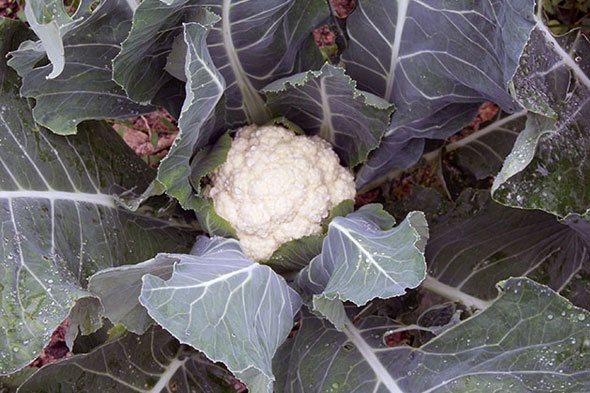

Mucous and vascular bacterioses are identified by characteristic spots on the leaves, which subsequently begin to rot and emit an unpleasant odor. With timely detection, the spots are cut out with small areas of healthy tissue, but if the infection is strong, the plant will have to be destroyed in order to avoid the spread of bacteriosis.
The most dangerous pests are:
- cruciferous flea,
- cabbage fly,
- aphid.
To prevent the spread of these parasites, it is recommended to compact cabbage plantings with crops such as garlic, tomato and celery.


